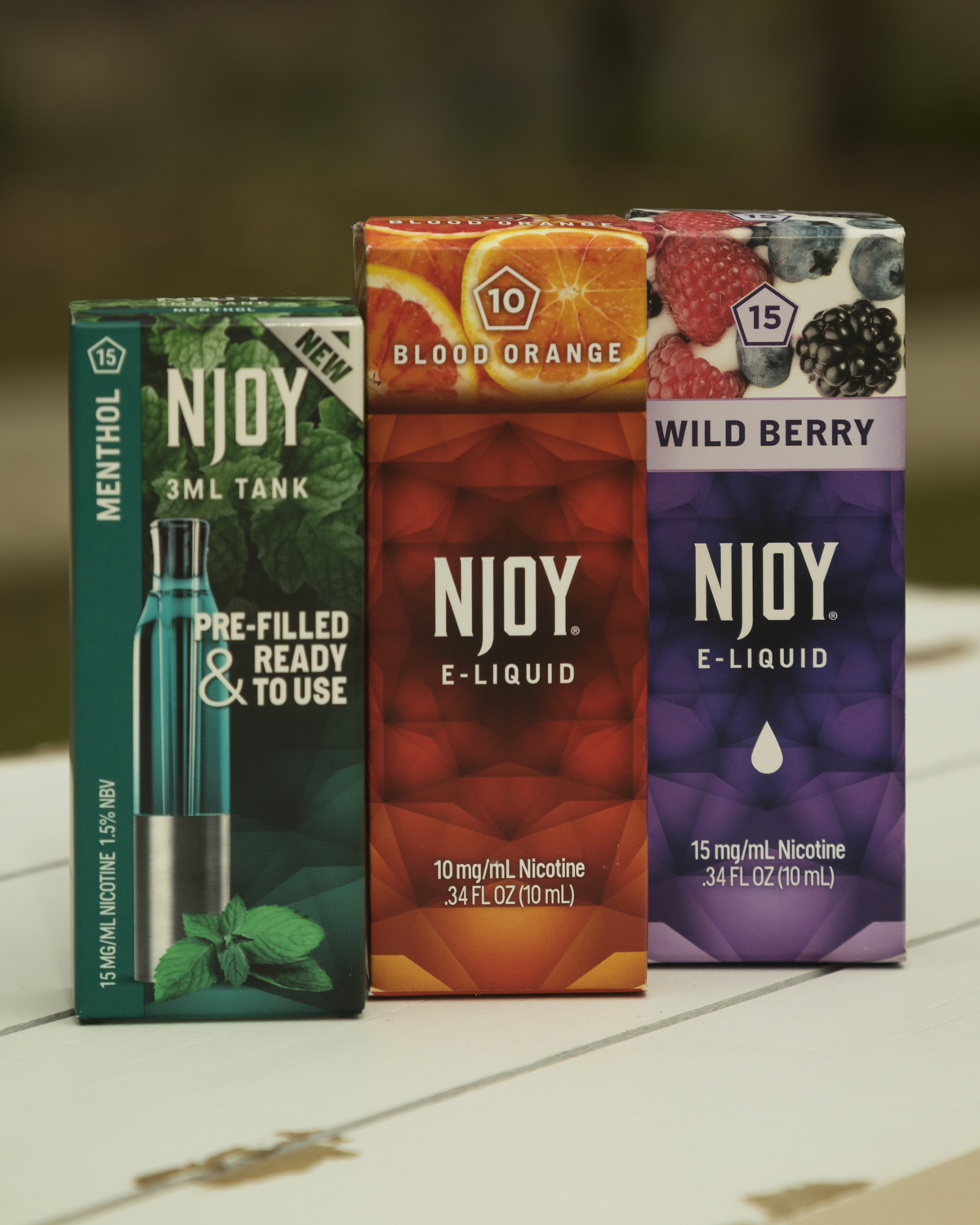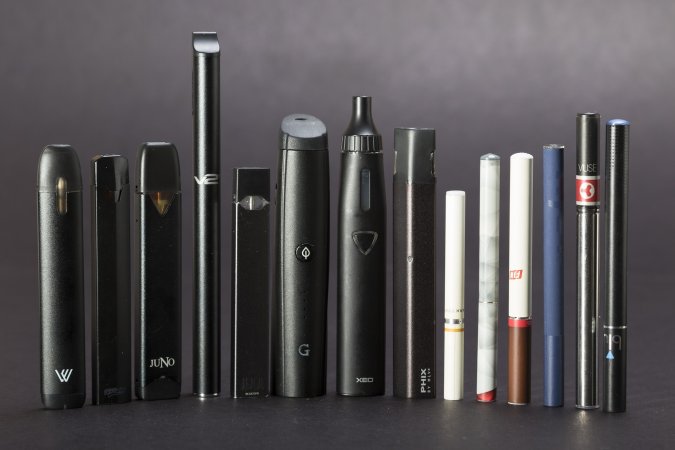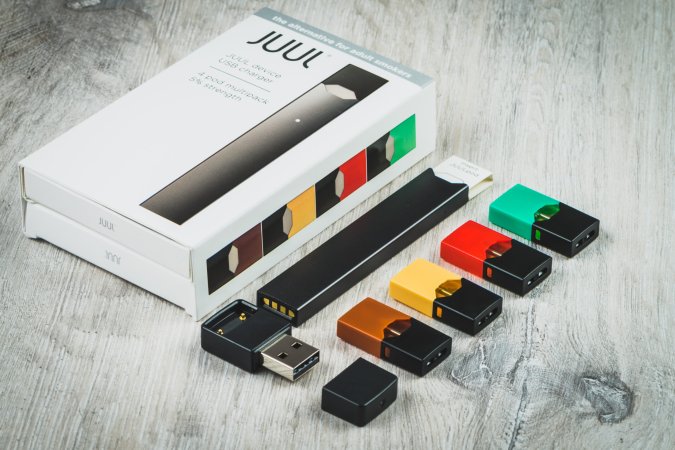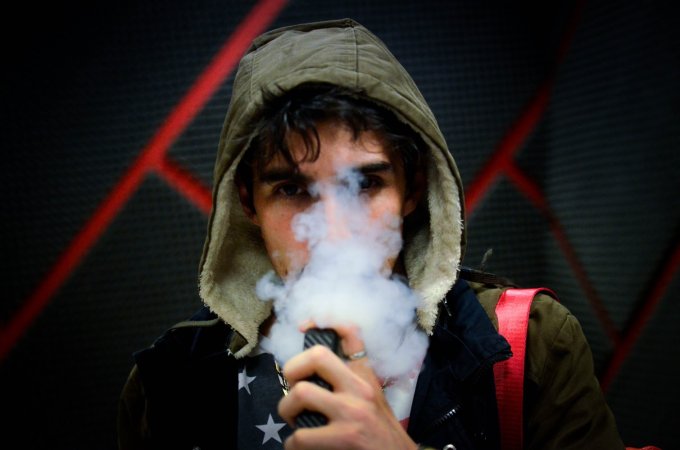

The White House and the Department of Health and Human Services announced this week that they’re readying a ban on flavored e-cigarettes, which are seen as a major culprit behind the rise of teen and adolescent use of e-cigarettes and nicotine, more generally.
Going after flavored e-cigarettes makes sense because survey results show that flavors are a main reason high school students vape, says Richard Miech, a principal investigator of an ongoing study on behaviors and attitudes of high school students based at the University of Michigan. According to the study’s 2015 data, the primary reason that kids vaped was out of curiosity. “The second highest reason was that they liked the flavors,” he says. “It seems likely to me that if you banned flavoring, kids might still experiment with vaping and Juul, but if there was no attractive flavor, that would be the end and it wouldn’t continue.”
In 2018, one in five 12th graders reported having vaped in the past 30 days. The percentage of high school seniors who reported vaping nicotine in the past 30 days rose from 11 percent in 2017 to 21 percent in 2018. Use of other nicotine products did not significantly change, but vaping alone drove around a five percentage point increase in nicotine use in 12th graders between 2017 and 2018. And research shows that e-cigarette use predicts future use of cigarettes—so strategies, like a flavor ban, that might reduce teen e-cigarette consumption would theoretically reduce future cigarette use.
“There’s all kinds of evidence that if you’re going to be addicted you have to be exposed early,” Miech says. “Companies know this. They want to get people when they’re young. People who focus on adolescents want to stop it—there’s no benefit to having these kids addicted to nicotine.”
Even though vaping companies work to differentiate themselves from cigarettes, the brands are closely linked with the tobacco industry—tobacco company Altria, which owns the Marlboro brand, is a major investment in Juul, for example. Flavored products are a long-standing industry strategy. “We know that for decades tobacco companies have utilized flavors to basically entice youth and teenagers to use tobacco products,” says Susan Walley, chair of the American Academy of Pediatrics Section on Tobacco Control. The Food and Drug Administration (FDA) banned flavored cigarettes in 2009.
Some public health experts focused on adults push the benefits of vaping as a key mechanism to get people to stop smoking cigarettes, and this type of ban still allows the products to be used in that way, Miech says. “The ban walks a middle line. You’re not banning all vaping devices, and adults who want to use vaping to quit smoking still can. They just can’t vape mango or mint.”
Adult users don’t usually go for flavors, says Thomas Payne, director of the ACT Center for Tobacco Treatment, Education and Research in Mississippi. “The vast majority of them want tobacco flavored or unflavored. Fruit and candy—thats what draws kids into the market,” he says. “It’s what is reversing the trend of dropping prevalence of nicotine in adolescents. It’s a whole new group that’s been addicted.”
The FDA said that the ban would be grounded in a rule that requires electronic nicotine delivery systems, including vaporizers and e-cigarettes, file applications for approval before they’re allowed to be marketed. The FDA will take action against flavored products that are on the market and demand that they file applications. The enforcement actively, then, does not guarantee that the flavored products are permanently removed: Companies could theoretically receive approval after filing an application.
In the White House’s announcement about the proposed ban, President Trump cited concerns about the recent vaping-associated deaths and illnesses as one impetus, though it’s still unclear what types of vaping products—nicotine, unregulated cannabis products, or both—are responsible. Regardless, hospitalizations and deaths were a big red flag for a lot of people, which might have helped catalyzed action, even if the flavored products themselves were not the direct cause, Payne says.
The focused attention on vaping-related illnesses, as well as the action against flavored products, might also increase the perception of the risk associated with vaping—which would likely drive down use, Miech says. “There’s a strong link between what kids perceive as risky and whether they use it. For the past few years, survey data has found high school students don’t think vaping is risky, which has tracked with increases in use. “Vaping has had the lowest perceived risk of any substance we measure,” he says.
Despite the proposed ban and potential policy actions, it is important to continue pushing for tobacco control and education in teens and adolescents, Walley says. “We really don’t want to slack off and say just because this ban has been announced everything is going to be ok.”






